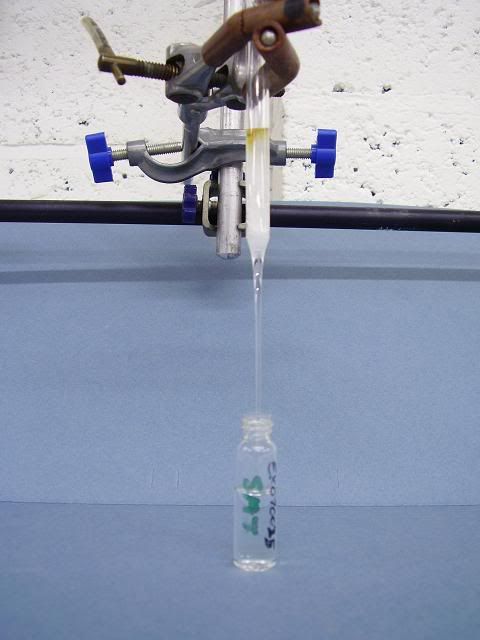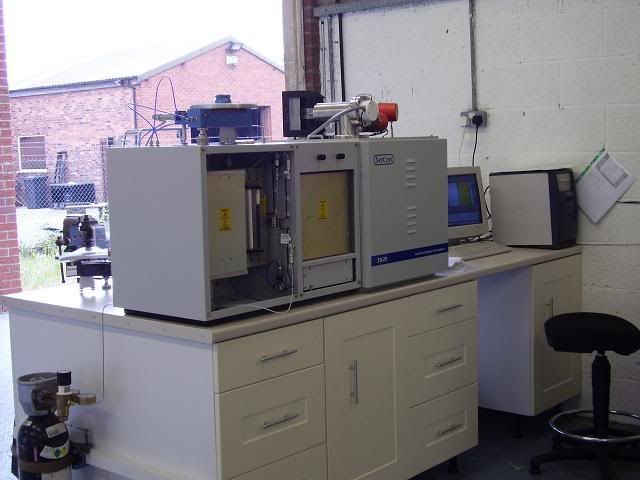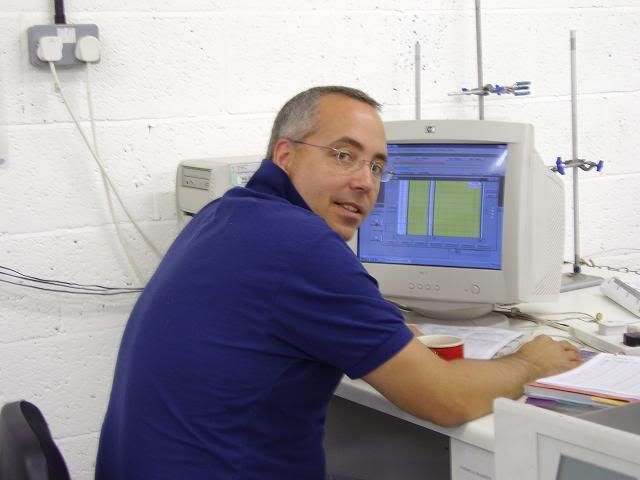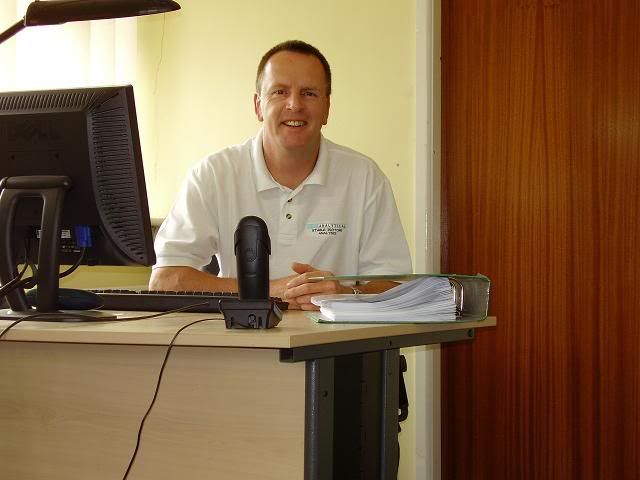Wednesday 12 September 2007
Isotope Investigation of Retail Beef
Wednesday 5 September 2007
Example Laboratory Reports
13C-Urea Breath testing for detection of Helicobacter pylori infection
13C and 15N (dual isotope) analysis of Animal Tissue samples for ecological profiling
13C and 15N (dual isotope) analysis of Bone Collagen samples for dietary reconstruction
Deuterium (2H) analysis of core waters for Deuterium Tracing of core invasion
Doubly Labelled Water (DLW - 2H and 18O) analysis for measurement of Total Body Water composition
Fruit Juice carbon-13 testing for detection of undeclared addition of corn syrup
Honey carbon-13 testing (SCIRA & ISCIRA) for detection of economic adulteration
These example reports highlight our quality control procedures and the strong emphasis we place on the presentation of results.
Thursday 23 August 2007
Analytical Service vs 'In House' Facility
Other Costs
A new IRMS costs money to run. First the correct environment needs to be put in place which means a good clean power supply, temperature control (usually air conditioning), plenty of space to allow all round access to the equipment and high purity helium, oxygen and probably reference gases on tap. High quality consumables (quartz glassware, various chemical packings, combustion boats/cups) have to bought from specialist suppliers and are used in the analysis of each and every sample and reference material. While some reference materials can be bought in, it is necessary to set up at some cost a wide range of reliable, traceable working laboratory standards that need to be used on a daily basis. The equipment needs to be serviced which often means taking out an annual service contract with the manufacturer. Finally and probably most importantly there is the cost of the technician to prepare the samples (including any pre-analysis work up) run and maintain the instrument and analyze the data to check that it is both good and true. Despite the best efforts of IRMS manufacturers, the instruments today are still a long way from being (and probably never will be) black box technology so the right operator is of paramount importance.
Getting the best out of the instrument
Mass spectrometers, especially the isotope ratio variety, break down quite a lot. While service contracts are designed to help the user, the response time for an engineer to visit may be quite slow compared to more common scientific instruments. This is quite normal for a 'specialist' instruments because there are only a few 'specialist' engineers to go round. Quite often they have to visit you direct from the factory and therefore the further your lab is away from the factory, the longer the response time will be. In order to minimize instrument down time it is best if you can diagnose and fix the common failures yourself and this also means having access to some testing equipment and a stock of some expensive spare parts. While a single instrument can be fitted with a variety of sample preparation interfaces e.g. elemental analyser, gas handling device, dual-inlet and GC combustion interface, this in itself can lead to instrument down time. Switching from one interface to another often involves some manual work, connections have to be checked for leaks and there is always a 'settling' time while you wait for the new set up to become stable. Even apparently simple procedures of changing the elemental analyser from analysing one isotope to another, can lead to one or more days of downtime and the waste of expensive consumables if there are only a few samples that require a particular isotope measured.
Using an Analytical Service instead
The service we provide removes all of the above worries ensuring that you get your data on time and that the grant money is spent on publishing those results rather than buying an expensive piece of equipment. The key to providing this is our ability to keep the equipment running and having the facility to run different samples for different isotopes on five dedicated IRMS systems. Not to mention that the analysis is done by highly experienced operators and support staff that know how to deal with many different types of sample and how to obtain the best results for each. With the discount we provide for academic research and the potential for sending samples in part-state of readiness (e.g. pre-capsulated), you may be suprised just how far your research grant might stretch.
Steve Brookes
Wednesday 22 August 2007
Mini Fractionation of Crude Oil


Monday 20 August 2007
New Water Isotope Standards


Over recent months we have prepared and calibrated a new set of working laboratory water standards and are making them available for sale to others that have a need for them. The deuterium and oxygen-18 abundances of the standards have been measured against (and are therefore traceable to) the new V-SMOW2 and SLAP2 international reference waters that are distributed by the IAEA. Each standard was subjected to our full calibration procedure which involves analysis of multiple replicates over a number of days.
The set of 5 standards covers a broad range of water isotope abundances making them suitable as working references for both natural and tracer studies. Details of the five standards are and their delta values vs V-SMOW2/SLAP2 in permil notation are (2H value, 18O value):
- IA-R052 (low abundance natural water) -157.12, -19.64
- IA-R053 (mid abundance natural water) -61.97, -10.18
- IA-R054 (zero abundance natural water) +4.93, +0.56
- IA-R055 (mid abundance enriched water) +843.43, +108.59
- IA-R056 (high abundance enriched water) +1701.83, +266.83
Each standard is provided in a 30 mL re-useable robust glass bottle (although we advise removing aliquots to prevent accidental contamination) and is accompanied by a 'report of analysis'. Although we have prepared large quantities of each, customers will be limited to purchasing 5 bottles of each standard. Customers that need to set up large quantities of working laboratory standards may wish to consider using our 'Standards calibration service' as an alternative.
Monday 9 July 2007
Report on SIMSUG 2007

Newcastle University was the host for a well-attended SIMSUG meeting this year. There were a broad range of very interesting talks, with Simon Jennings (CEFAS) starting the proceedings as the Keynote speaker for the first day. Simon Jennings’ presentation on the use of Stable Isotopes in Food Web Analysis impressed many people with the sheer scale of his sample collection- he analysed several thousand samples and Iso-Analytical Ltd conducted most of the analyses. There were several presenters who had used Iso-Analytical Ltd for their analyses and it was good to be able to put faces to the names of the clients we’ve been working with and to be able to see where our work is going and what it is being used for. It was also interesting to see the advances in the methodology of IRMS, particularly the growing use of Compound Specific analysis and to see how people are using the techniques now and future applications and techniques. All in all it was a very interesting and very useful conference.
Profile of Tanith Allwood

Tanith Allwood BSc (Hons) - Analyst
Tanith started working part time for Iso-Analytical in late 2003 while studying for her degree in Geography and Geology at Manchester University. After graduating with honours in 2005 she became a full time analyst with us.
In a relatively short period of time Tanith has become involved in all aspects of stable isotope analyis, from sample preparation through to operation of the mass spectrometers.
Thursday 14 June 2007
Fifth IRMS System Commissioned

In order to keep up with the demand for analyses our IRMS system count rose to 5 last month. The new system was obtained from SerCon Limited and complements the other 4 systems.
Back in 2000 our first instrument had to be used to analyse all of the stable isotopes in lots of different sample types. Over time we have developed the analytical facility so that instruments are dedicated to particular isotopes and types of sample. This has enabled us to cope with 15,000+ samples we receive each year so that they are turned around in good time. Our facility is now made up of:
System 1 : Deuterium and oxygen-18 in water (equilibration) and solids (high temperature conversion)
System 2: Carbon-13 and nitrogen-15 in solids (EA-IRMS)
System 3: Carbon-13 in gases, carbonate isotopes and overflow for system 2
System 4: Sulphur-34 in solids (EA-IRMS)
System 5: Overflow for systems 2 and 4.
Meet the Support Staff

Margaret Anderson (left) - Technician
Anne Bruce (middle) - Technician
Tina Ringrose (right) - Administration
Tina, Anne and Margaret are three of the key elements in getting your samples analysed. Many will know Tina through e-mail and phone contact as one of her roles is to log in your samples when they arrive at the lab.
Anne and Margaret are the ones that supply the care and attention that is required to prepare your samples for analysis on the instruments.
Wednesday 13 June 2007
Profile of Ian Begley
Born: 1968
Nationality: British
He has been active in the development of methods for isotope analysis by mass spectrometry since 1991. Prior to co-founding Iso-Analytical Limited he held the position of Research Scientist with isotope ratio mass spectrometer manufacturer, PDZ Europa Ltd, with responsibility for application, method and instrument development. He is well known to the isotope community having made presentations at many scientific conferences and had seven scientific papers published in peer-reviewed journals.
He trained as an Analytical Chemist, being awarded a BSc with first class honours in Chemistry with Information Technology and Instrumentation from Glasgow Caledonian University in 1991. After that he was awarded the degree of Doctor of Philosophy from Loughborough University in 1996, for a thesis on "The application of inductively coupled plasma mass spectrometry to isotope ratio measurement."
He was employed as Research Chemist in the Stable Isotope and Mass Spectrometry group at the Scottish Crop Research Institute (SCRI), 1994-1998. Contributing to making SCRI a centre of excellence for use of stable isotopes in agriculture by development of automated methods for isotope analysis of hydrogen and oxygen. Previously he worked as a Chemist with Smithkline-Beecham, and the Ministry of Defence, and as a consultant to British Gas, and mass spectrometer manufacturers, VG Elemental.
Main responsibilities in Iso-Analytical: Analysis, technical development.
Profile of Charles Belanger

Charles Belanger BSc – Director and Laboratory Manager
Born: 1968
Nationality: American
Prior to co-founding Iso-Analytical Limited he was manager of the Analytical Service laboratory of PDZ Europa Ltd (previously Europa Scientific) since 1998. He was first employed by Europa Scientific in 1993 as Development Engineer within their environmental science unit, being promoted to the position of Applications Scientist in 1996. He was awarded a BSc in Engineering from Michigan State University in 1993.
Charles not only manages the day to day analysis of circa 15,000 samples that pass through the laboratory each year but keeps the instruments fully maintained. This is a key reason why we can supply our good turnaround to ensure that researchers get their data in good time. IRMS systems are notoriously prone to minor breakdowns and therefore it is necessary that we can maintain and service them ourselves to avoid the delays that would result from waiting for Manufacturer's service engineers to attend to a breakdown.
Main responsibilities in Iso-Analytical: Analysis, laboratory regulation and quality control, instrument maintenance, information technology and supervision of support staff.
Profile of Steve Brookes

Steve Brookes, BSc (Hon), PhD – Managing Director
Born: 1962
Nationality: British
Commenced employment with the scientific instrument manufacturer Europa Scientific in 1988, direct from PhD studies, at Manchester Polytechnic.
Initially appointed as Applications Biochemist, with the brief to develop the human metabolic market for isotope analysis. This involved experimental work, instrument demonstrations, installations at customer sites and the preparation and presentation of scientific material. His major achievement came with identification of the need for a carbon-13 breath test system, followed by involvement in its development and commercial introduction.
He went on to establish and manage a metabolic research unit, when the company decided to service the market by creating applications based sectors. This involved management of sales, marketing, R&D, production, budget control and service for this sector. He was later promoted to Sales and Marketing director for the companies research products in 1997 (£2.6M turnover). Duties involved managing the sales team, marketing activities, customer service and applications development. At its height, this involved management of 11 people. Europa Scientific was forced into receivership in late 1998. After being bought out of receivership, and becoming PDZ Europa Ltd, he was retained as Sales & Marketing manager to achieve sales of £1.5M, despite tbeir loss in market credibility and budgetary constraints.
During his time at Europa Scientific he made a large number of contacts with key people in the stable isotope community and contributed to that community by setting up many industry-academia collaborations.
When the time was right to move away from the scientific instrument supply industry in the year 2000, he co-founded Iso-Analytical Limited with Charles Belanger and Ian Begley. Their aim was to apply their 'Expertise In Stable Isotope Analysis' by setting up a contract analysis laboratory that could be used by Academia and Industry alike.
Main responsibilities in Iso-Analytical: Sales, business planning and administration, advertising and sample analysis.
Tuesday 12 June 2007
Simsug 2007
The annual meeting of the Stable Isotope Mass Spectrometry User Group
20-22 June 2007
Hosted by the Institute for Research on Environment and Sustainability & the School of Civil Engineering and Geosciences, Newcastle University
SIMSUG Website link
We at Iso-Analytical are particularly pleased that after a short break, the annual SIMSUG meeting is back on the agenda and is being hosted by Newcastle University next week. It is an ideal opportunity for some of us to get out of the laboratory for a couple of days and meet our customers.
In attendance next week will be Iso-Analytical co-founder Charles Belanger, analyst Tanith Allwood and soon to be our newest analyst Gillian Taylor.
As always, we are very pleased to be a sponsor of this event which provides both a formal program of presentations about research with stable isotopes and an informal forum for the exchange of ideas.
Please come and say hello to us.
Welcome to the Iso-Analytical Blog
- New services and analytical methods
- The people at Iso-Analytical
- The instrumentation we have at our disposal
- What our customers are using stable isotopes for
- Help and advise on preparing and sending your samples
- Special offers and research awards
- News of isotope analysis related events e.g. conferences
While these pages will initially only provide a point of information, we hope in time to make the blog interactive so that you can post questions to us.
In the mean time, I hope you enjoy the new medium and find it useful and I welcome any feedback you can give me by e-mailing at the address shown in the blog header.
For and on behalf of Iso-Analytical Ltd
Steve Brookes


